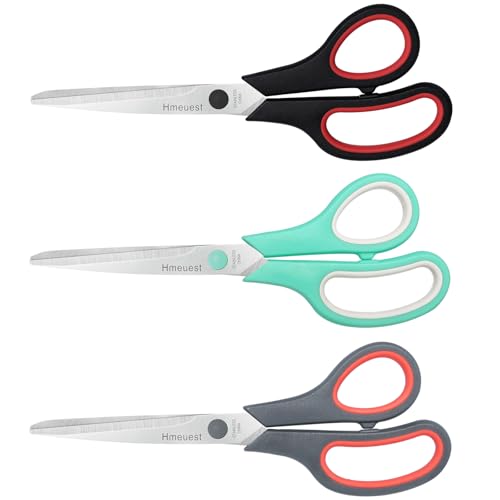Why Fabric Scissors are Different from Regular Scissors
Fabric scissors and regular scissors may seem similar at first glance, but they serve different purposes. Understanding the difference between these two types of scissors is essential for anyone working with fabrics or engaging in crafting projects. In this article, we will explain the distinctions between fabric scissors and regular scissors, their specific uses, and why it is crucial to have both in your toolbox.
Fabric Scissors: Designed for Precision
Fabric scissors, also known as sewing scissors, are specifically designed for cutting various types of fabrics. These scissors have a unique shape and feature a sharp, pointed tip that allows for precision cutting. The blades of fabric scissors are typically longer than regular scissors, ranging from 6 to 12 inches.
The longer blades of fabric scissors enable smooth, uninterrupted cuts through multiple layers of fabric. In addition, fabric scissors have serrated or micro-serrated edges. This design feature helps to prevent fabrics from slipping or fraying while cutting, resulting in clean, straight edges.
The handles of fabric scissors are also distinctive. They are often larger and offer ergonomic grips, which provide comfort and control during extended use. These handles are designed to accommodate the needs of sewers, tailors, and other professionals who spend a significant amount of time working with fabrics.
Regular Scissors: Versatile Everyday Tools
Regular scissors, on the other hand, are versatile tools used for a wide range of general cutting tasks. Whether you need to cut paper, cardboard, tape, or even open packages, regular scissors come in handy for everyday activities around the house, office, or school.
The blades of regular scissors are typically shorter compared to fabric scissors. They have a straight cutting edge, making them suitable for precise cuts in flat objects. The shorter blades also provide more control when cutting in small, tight spaces, which is often required for crafts or DIY projects.
The handles of regular scissors are usually smaller and come in various shapes and designs, including ambidextrous options. This allows for easy and comfortable handling for users with different hand sizes and preferences.
The Importance of Having Both in Your Toolbox
While it may be tempting to use regular scissors for fabric cutting tasks, it is important to have dedicated fabric scissors in your toolbox. Using regular scissors on fabric can result in frayed edges, damaged fabric, or uneven cuts. Fabric scissors are specifically designed to prevent these issues and ensure clean, professional results.
Having both fabric scissors and regular scissors in your toolbox allows you to tackle a wider range of projects. You can use regular scissors for general cutting tasks and save your fabric scissors exclusively for fabric-related projects. By doing so, you can prolong the sharpness and longevity of your fabric scissors, as they won’t be used on materials that can dull the blades, such as paper or cardboard.
Remember, using the right tools for the job ensures better outcomes and prevents unnecessary frustration. So, investing in a pair of high-quality fabric scissors and keeping them separate from your regular scissors is a smart choice for anyone working with fabrics or engaging in crafting activities.






